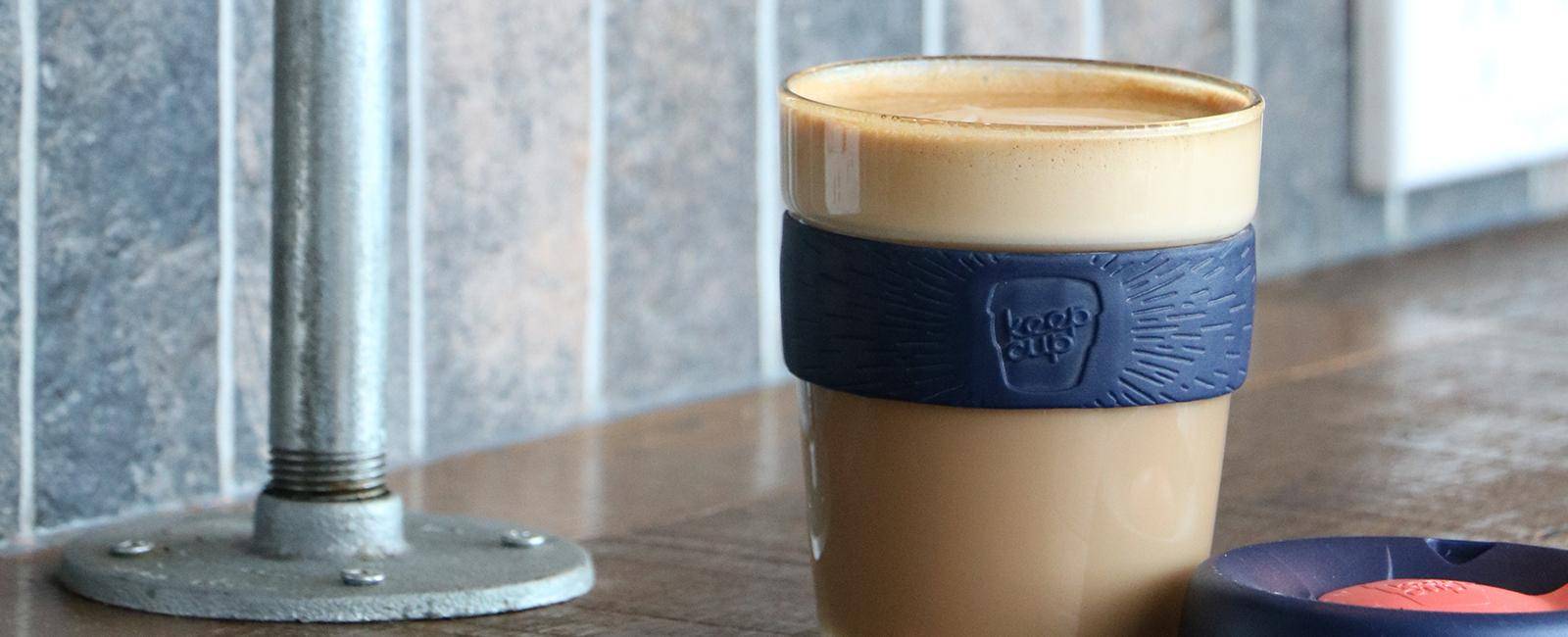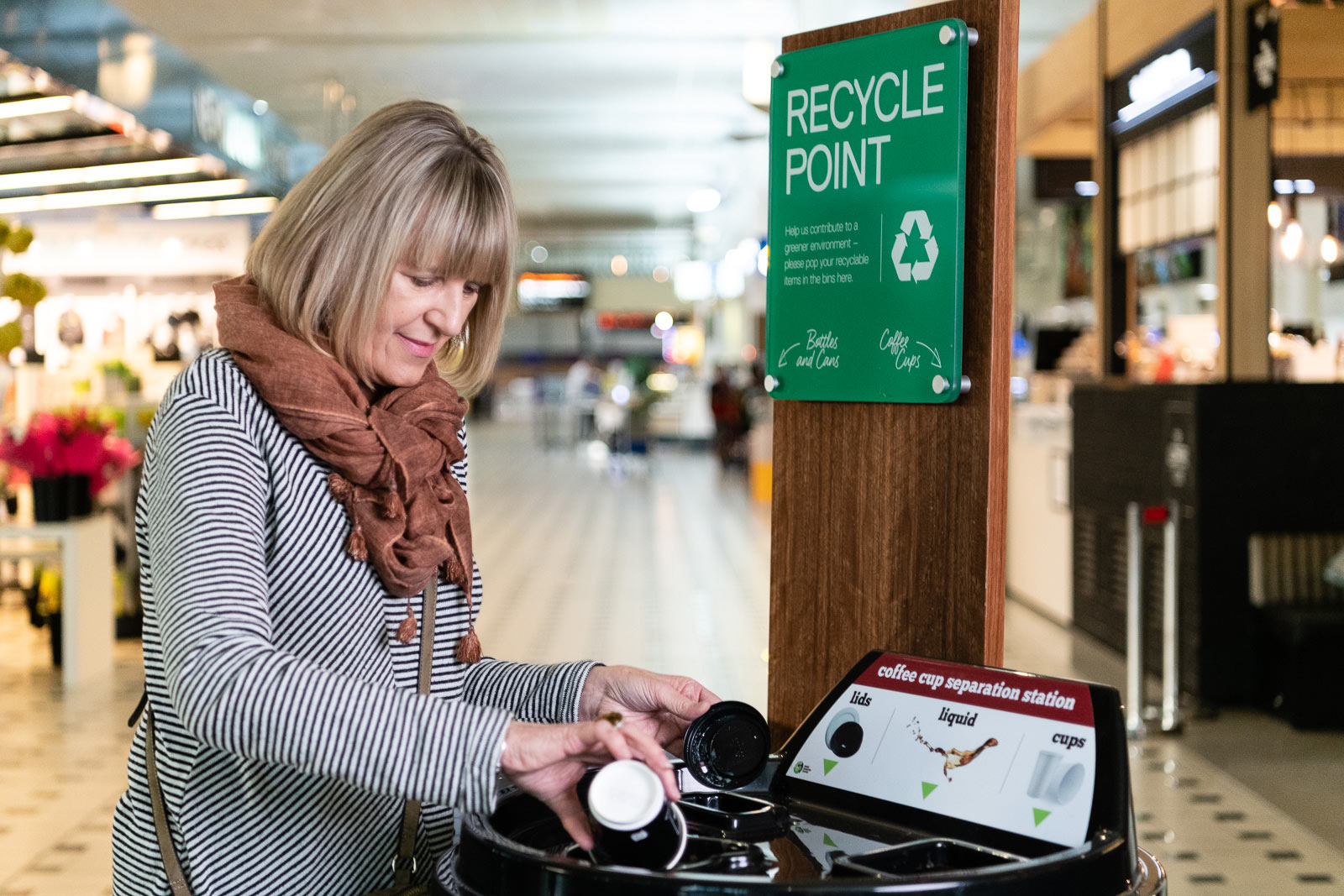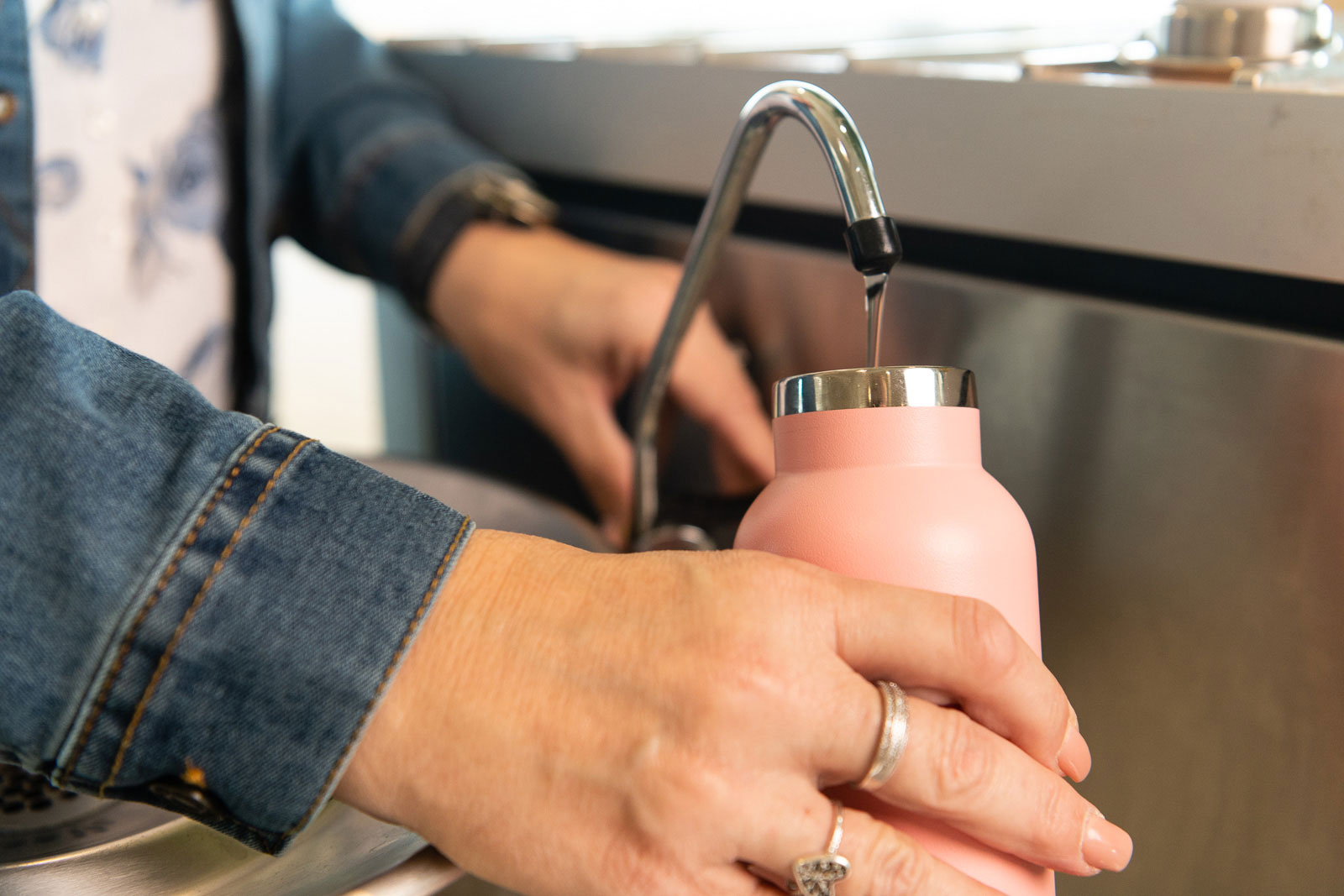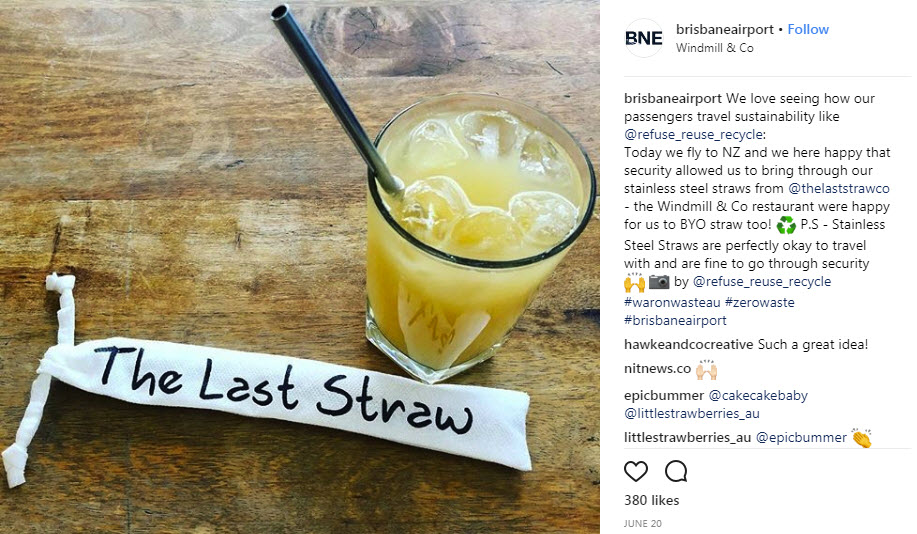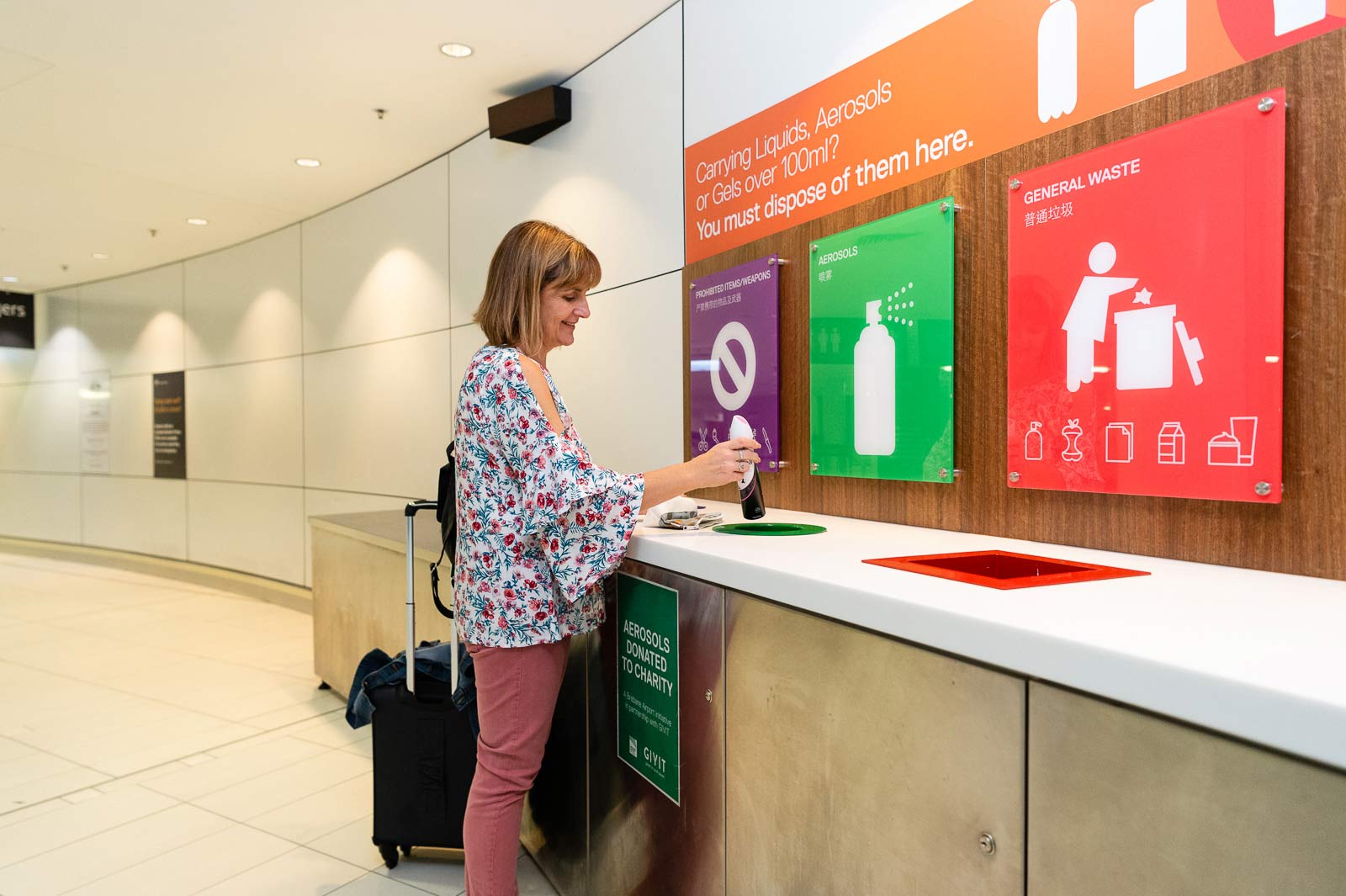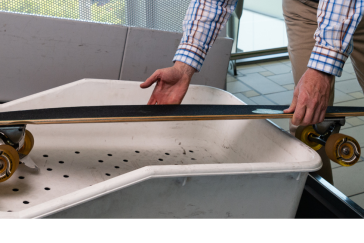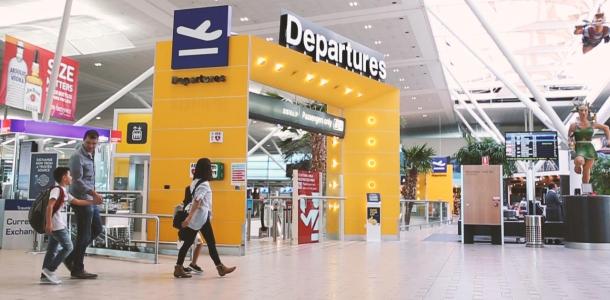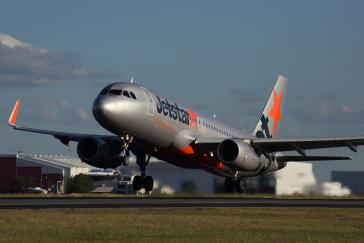
We all have an important role to play when it comes to how we influence climate change and the future of our environment. Brisbane Airport is dedicated to safeguarding our environment for future generations with the introduction of our refreshed Sustainability Strategy, focusing on a long-term commitment to our environment and proactively reducing and removing our footprint. While we are aware of our larger part to play, we want to support the everyday traveller who works hard to do their part.
The awareness around how we personally can reduce the effects of climate change has never been higher, and for those who wish to fly on the greener side of life we have a number of ways you can make your trip more environmentally friendly.
1. Coffee
Like a large number of the population – I don’t function so well without my morning up of Java. When I’m flying, it’s a priority for me to get to the airport early enough to grab my favourite so I’m charged and ready for the day ahead. Brisbane Airport cafes order an estimated 4.5 million takeaway cups each and every year. That’s a lot of coffee…and a whole lot of waste.
Most takeaway coffee cups end up in the recycling, with conscientious caffeine consumers mistakenly under the impression that the entire cup is recyclable. It’s the separation of the polyethylene lining from the paper cup (i.e taking off the lid) that presents the issue, and currently not all recycling facilities enable this process, resulting in large volumes of waste intended for recycling ending up in landfill.
So, what are the alternatives?
BYO
Bringing your own cup is fast becoming the norm right across cafes in Brisbane and our terminal cafes are no different with all cafes welcoming the use of Keep Cups.
Don’t have a Keep Cup? A number of cafes are also retailing Keep Cups, and some offer a free coffee with purchase. Just ask the friendly staff at one of the many cafes throughout the Domestic and Internatinal Terminal.
Take a seat
When you have the time to sit down, savour your coffee and do a spot of people watching – there’s no better place than the airport! All cafes at the International Terminal offer coffee in ceramic cups. At the Domestic Terminal, you can choose to dine in with your coffee and do a bit of plane spotting from the The Common and The Aviary or watch the world go by at the , The Lord Lamington and Graze Grill & Bar.
Recycle
If you do choose to grab your coffee in a disposable cup – don’t worry, you can still do your bit to minimise waste. Place the lid of your takeaway coffee cup in the recycling and the cup into the general waste.
2. Water
When travelling, consider bringing your own water bottle. I get thirsty when flying, and keeping up on the water intake is essential on long flights. Water takes up a lot of space on aircraft, so it’s definitely at a premium, often being handed out in the world’s smallest single use plastic bottles or in tiny plastic cups that barely quench your thirst. Bring your own favourite water bottle and top it up before jumping on the plane. If you are flying internationally, you’ll need to empty your bottle before heading through security due to the restrictions on liquids, aerosols, gels and powders, but you can fill it up once you’ve gone through Passport Control. There are cold filtered water stations located throughout the terminals, both before and after security screening. You’ll find them adjacent to most bathrooms or check the terminal maps for exact locations.
3. Straws
Going without a straw in our drink is one of those little things that we can do to contribute to making a difference. Plastic straws are slowly disappearing from our daily lives – whilst far from the biggest contributor to plastic pollution, they should be one of the easiest to let go for the majority of people.
So next time you grab a drink - go without the straw if it is practical to do so, or grab yourself one of these stylish BYO straws from the Last Straw Co.
4. Waste
We’ve all been there - in a tearing hurry to make your flight, or distracted by something on your phone, we’ve tossed trash in the nearest bin, whether it was the right bin or not. Or sometimes we aren’t 100% sure what goes where. Waste contamination in recycling is a major issue right around Australia and large volumes of recycling end up in landfill due to poor recycling practices. That is why Brisbane Airport has introduced a few easy initiatives to make things easier for you and make things better for the planet.
Oscar Bins
When you hear the term “garbage AI” you may think this is a complaint about a smartphone, but not at Brisbane Airport. Introducing Oscar, the smart bin, to help tell you which bin to put your trash in. Simply hold up your item of garbage to the camera, and Oscar will tell you which bin this goes in.
This sophisticated bin uses AI to learn the specific packaging used by the retailers at the airport to better inform you where to put your waste. Oscar bins are located at the Domestic Terminal at the Central Food Court, Central Satellite and Qantas Terminal Food Court. Look out for the special Oscar bin located at the Qantas Food Court, this includes an additional option for bottles and cans to be donated to Containers for Change.
Containers for Change
Brisbane Airport is proud to partner with Containers of Change, a non-profit organisation that uses the 10-cent refund on bottles and cans and donates this to a nominated charity. So not only are you doing your bit to help the environment, but you are also helping our community with the donation. Containers for Change bins can be found throughout the Domestic Terminal.
5. Transit
It’s common knowledge that public transport is one of the most effective ways to reduce carbon emissions, and Brisbane Airport has a few options for those wanting to opt-out of driving to the airport.
Bus
Brisbane Airport now has a 100% electric-powered bus fleet, transferring passengers from the car parks and between terminals. Our bus fleet also transits between Skygate and both terminals. The 590 bus travels from both Garden City (south of the river) and Toombul (north of the river) to Skygate, meaning you can transfer to one of our free electric-powered buses to take you to the airport.
6. Carbon Offsets
According to the International Air Transport Association (IATA), more than 30 member airlines around the world offer carbon offset programs where passengers can elect to offset the carbon emissions for their travel. These are typically offered on flights booked directly with the airline.
In Australia, all of the major airlines offer Fly Carbon Neutral programs that are recognised by the Australian Federal Government’s National Carbon Offset Standard (NCOS), and information about the carbon offset programs they contribute to are listed on the individual airline websites.
How to be a sustainable traveller
National Geographic have six simple travel tips on how to best reduce your impact on the planet when travelling. You can read the full article here, but in a nutshell:
- Embrace the Slow Travel movement – go to fewer places and spend more time in each one – take the train instead of a plane where it is practical to do so (we have more slow travel tips here).
- Give, but do it consciously – research local reputable organisations to contribute to, be it money or goods (we have more conscious travel tips here).
- Say no to plastic – reduce, reuse, and recycle.
- Research tour and accommodation operators – understand their commitments to environmental and local sustainability practices.
- Support the REAL local economy – choose souvenirs from local artists over mass produced items.
- Don’t buy products made from endangered wildlife or plants – enough said.

